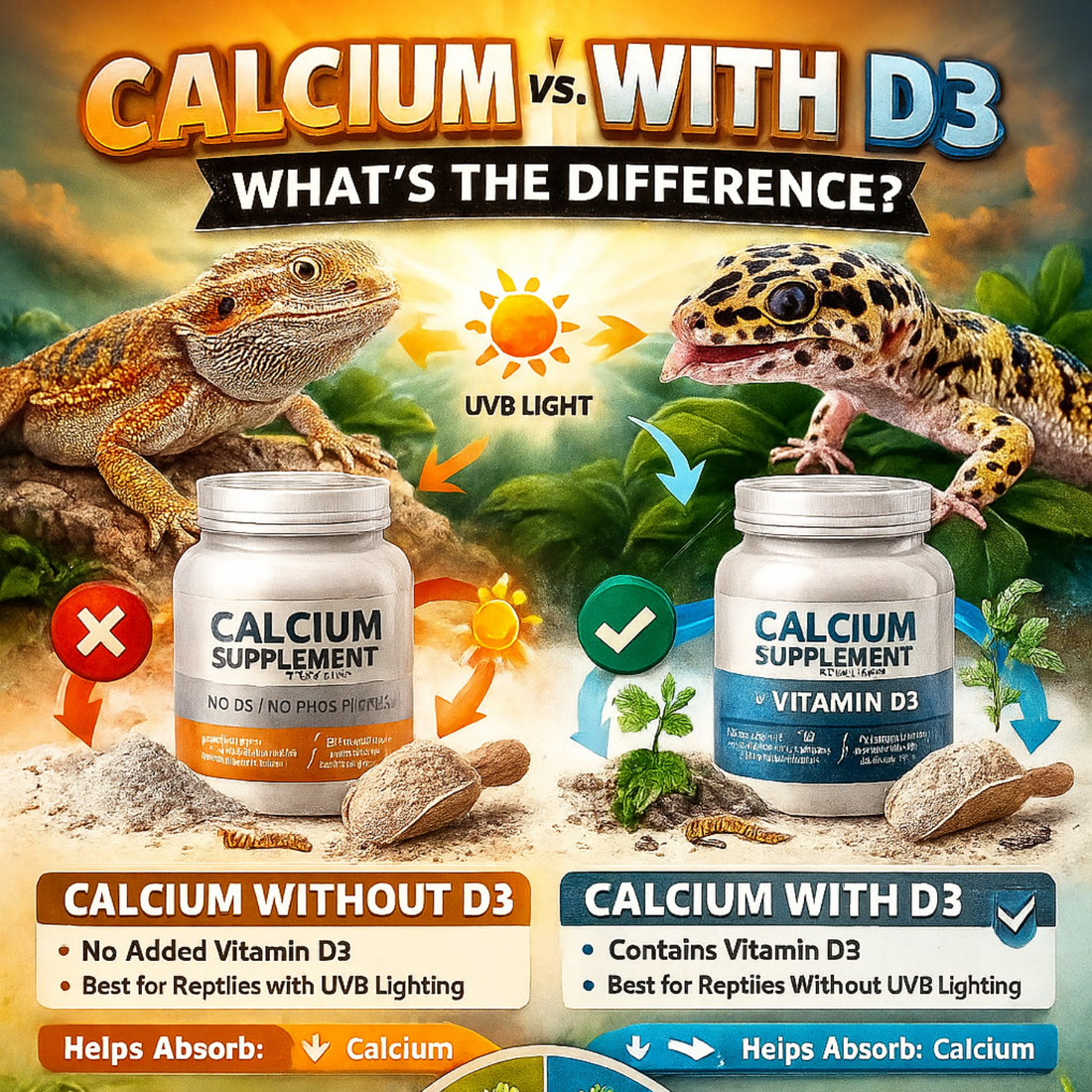
Calcium With D3 vs. Without D3: What’s the Difference?
Share
Calcium is one of the most important supplements for reptiles. It supports strong bones, proper muscle function, and overall health. But when you go shopping, you’ll notice there are two main types of calcium powder: with Vitamin D3and without Vitamin D3. Knowing the difference is essential to keeping your reptile healthy.
Calcium Without D3
This is plain calcium powder. It’s typically used for reptiles that already get enough Vitamin D3 from a UVB light. UVB lighting allows reptiles to naturally produce Vitamin D3 in their bodies, which helps them absorb calcium properly.
• Best for: reptiles housed with proper UVB lighting (like bearded dragons, uromastyx, leopard geckos, and many others).
• Why use it: prevents excess D3 buildup and keeps supplementation balanced.
Calcium With D3
This type contains both calcium and added Vitamin D3. Since D3 is what allows the reptile’s body to absorb calcium, it’s useful for reptiles that don’t get enough UVB exposure.
• Best for: reptiles kept in enclosures with little or no UVB lighting.
• Why use it: ensures your reptile can actually use the calcium they’re getting.
Important: Too much Vitamin D3 can be harmful. That’s why it’s usually recommended as a supplement you rotate in occasionally instead of using at every feeding (unless your reptile has no UVB at all).
How Often Should You Give Calcium?
This depends on the species, age, and setup, but here are some general guidelines:
• Young, growing reptiles: Dust food with plain calcium 4–5 times per week.
• Adult reptiles: Dust food with plain calcium 2–3 times per week.
• Calcium with D3: Offer about once a week if your reptile has UVB lighting, or more often if they don’t have UVB.
It’s also a good idea to rotate in a multivitamin supplement once a week, since reptiles need more than just calcium for complete nutrition.
Think of it this way:
• Calcium without D3 = for reptiles with UVB lighting.
• Calcium with D3 = for reptiles without enough UVB.
By using the right calcium supplement at the right frequency, you’ll keep your reptile’s bones strong, prevent metabolic bone disease, and support a long, healthy life.
What Does a UVB Bulb Actually Do for Reptiles?
UVB lighting is one of the most important parts of a reptile enclosure, but it’s also one of the most misunderstood. Many new keepers think of it as just another heat lamp — but in reality, UVB has a completely different role in keeping your reptile healthy.
UVB and Vitamin D3 Production
UVB bulbs give off ultraviolet B radiation, which is similar to the natural sunlight reptiles would get in the wild. When your reptile is exposed to UVB, their skin produces Vitamin D3.
Why is this important?
• Vitamin D3 is what allows reptiles to absorb and use calcium.
• Without it, even if you dust their food with calcium, they can’t process it properly.
• This can lead to Metabolic Bone Disease (MBD)— weak bones, deformities, tremors, and eventually life-threatening health issues.
Other Benefits of UVB
UVB doesn’t just help with calcium. It also supports:
• Bone strength– strong skeleton development, especially in young reptiles.
• Immune system health– helps the body fight off illness.
• Natural behavior– reptiles exposed to proper lighting are more active, eat better, and show healthier colors.
• Overall longevity– reptiles kept with correct UVB tend to live longer, healthier lives.
Why Just Heat Isn’t Enough
A heat bulb (UVA or basking lamp) provides warmth, which reptiles need for digestion and activity. But heat alone cannot replace UVB. A reptile can be warm but still calcium-deficient if UVB is missing.
Think of it this way:
• Heat = energy to function
• UVB = ability to absorb nutrients
Both are necessary, and they work together.
